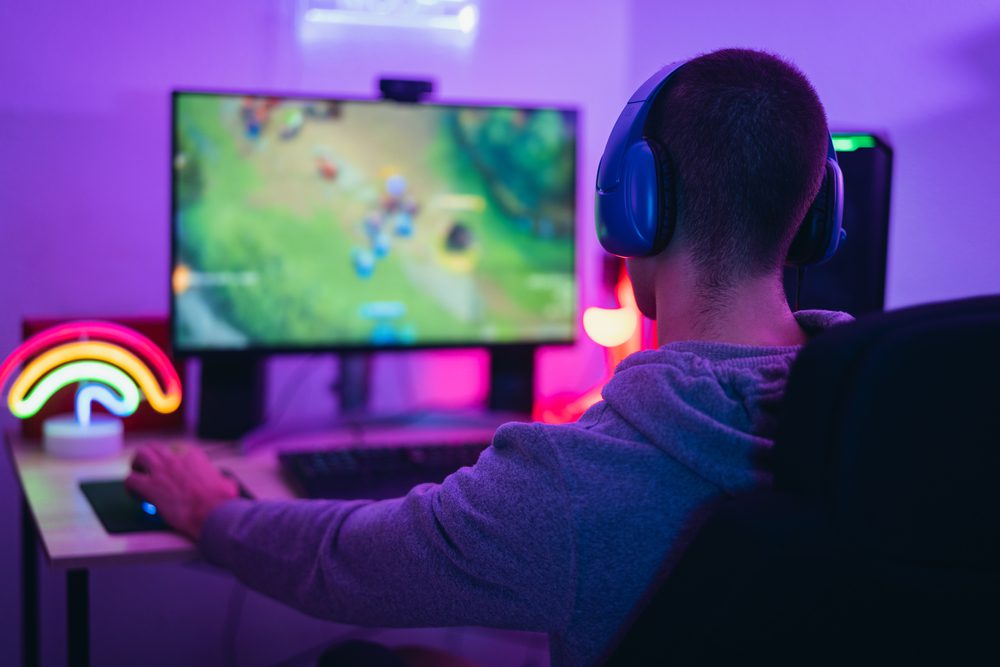Do you know any of these brain myths?
Brain myths! There are many of them, and today we want to debunk some of the most common ones. The brain is an incredibly complex organ, and because of that, scientists don’t know that much about it.
Sure, they know the basics, but beyond that, there is a lot of mystery. And if scientists are not sure about how the brain works, how could we know more than them?
Since the beginning of time, humans have discovered a multitude of incredible things. But we were not always right. During the Middle Ages, we believed that the Earth was flat, something that we now know is entirely false.
And the field of neuroscience is no exception to false affirmations like this one. That’s how many of the brain myths people know about today were born.
Read on, and let’s debunk some of the most popular brain myths that a lot of people still believe in!

1. Video games will destroy your brain
False! From all of the brain myths, we decided to start with this one because it is maybe the most absurd of them all. If we look through all the research about the brain ever done, there is not a single paper that shows that a person who plays video games will lose their cognitive functions.
Also, there is not a set number of hours per day or per week that you need to respect when playing video games in order to prevent the “rotting” of the brain. There is no healthy or unhealthy amount of time that you can spend playing. Even more, some games can actually help you and make your brain stronger. There are a lot of games that can develop hand-eye coordination and strategy skills.
For example, surgeons who need to manipulate a machine and see everything that they do on a screen can get better at doing this by playing video games.
The real problems appear when all you do all day is play video games. People need human interaction beyond the one you can get through a screen.
2. We use only 10 percent of our brains
This is one of the brain myths that is still extremely popular, and people always share it when the topic of the brain is brought up in a discussion. Really! Take a random group of seven people talking about the brain, and one of them will surely say that we can only use 10% of our brains.
And after all, this one sounds promising. A fixed number that has been repeated for over a century and which says that we have a considerable amount of mental power that we are not using. If we are not careful, it can sound pretty real. But it is not! It’s just another one of the brain myths that we want to debunk today.
Since MRI technology has improved, scientists have been able to see that we actually use all of our brains. Brains are expensive, and they take a lot of resources to develop during the fetal stage and even in childhood. So, from an evolutionary point of view, it makes no sense to have more brain tissue than you really need.
Now, there are some studies that show that we have some brain reserve. For example, results from autopsies show that there are a lot of people who have signs of Alzheimer’s in their brains but have never shown symptoms during their lives.
3. Left-side or right-side, which do you use the most?
Another one of the brain myths that you’ve heard for sure is the one that says that right-side dominant people are more creative and artistic, while left-side dominant ones are logical and analytical.
But again, this is one of the myths, so the information is wrong and inaccurate. We use the whole brain, which means both sides of it. The interest in the creative side or the logical and mathematical side stems from a personal interest or maybe because you were born into a family that works in this field. It has nothing to do with a part of the brain that people say is the dominant one in your case.
It is true that the brain has two sides; the cerebral cortex is made up of two hemispheres, but they are connected, and the neurons from the right side also go to the left side. There are some zones in your brain that are specialized for doing different things; for example, Broca’s area on the left side controls language ability.
In the end, keep in mind that even if your brain has two sides, you use the entire brain. There is no doubt that the right side will make a poet out of some, and the left side will make an incredible engineer. These are all brain myths.
4. As you get older, your memory will be affected
Many people say that as you age, you will start to lose your ability to recall information. But is this true? Nope, it’s not. Is another one of the brain myths. If you are older than 60 and you notice that you are becoming unable to recall recent information, this might be a sign of Alzheimer’s or another type of dementia, and you should immediately go see a specialist.
Having memory problems is not something that just happens to all adults as they get older. Also, another interesting fact is that sometimes seniors can have better spatial and visual memory when performing specific tasks.
Sometimes you might notice that your short-term memory is affected, but you have to consider all the responsibilities that adults have. Raising grandchildren, having a job, or volunteering can all be tiring for the brain.
When you have so many things that you need to keep track of it is normal to sometimes forget things. It happens, and it should not scare you. If you ever feel concerned by the fact that you are forgetting various things, you can always go to the doctor to check and see if everything is alright.

5. Male and female brains are different!
Men are from Mars, and women are from Venus, right? Not at all. This is one of the most biased and sloppy brain myths that you will ever hear, and we want to debunk it once and for all.
There was a time when some neuroscientists who were, let’s put it this way, not exceptionally prepared claimed that the size of the head, the brain stem structure, or the spinal ganglia were to blame for the incapacity of women to vote correctly, think logically, or practice any analytical job.
Now, the last theory is somehow more developed, and it claims that men have some parts of the brain that are more specialized for doing logical stuff while women are better at dealing with emotional stuff.
But this theory is not real. Yes, there are many differences between men and women and how their bodies function, but if we look at the function of the brain in day-to-day life, we can see that there are no differences at all. The way we communicate, feel emotions, learn new skills, and perceive the world are all the same.
If you want to learn more fantastic facts about the human brain, you can start by reading the following book: Brains Explained: How They Work & Why They Work That Way | STEM Learning about the Human Brain | Fun and Educational Facts about Human Body
You should also read: 4 Zombie Cases That Already Happened (Explained by Science)














